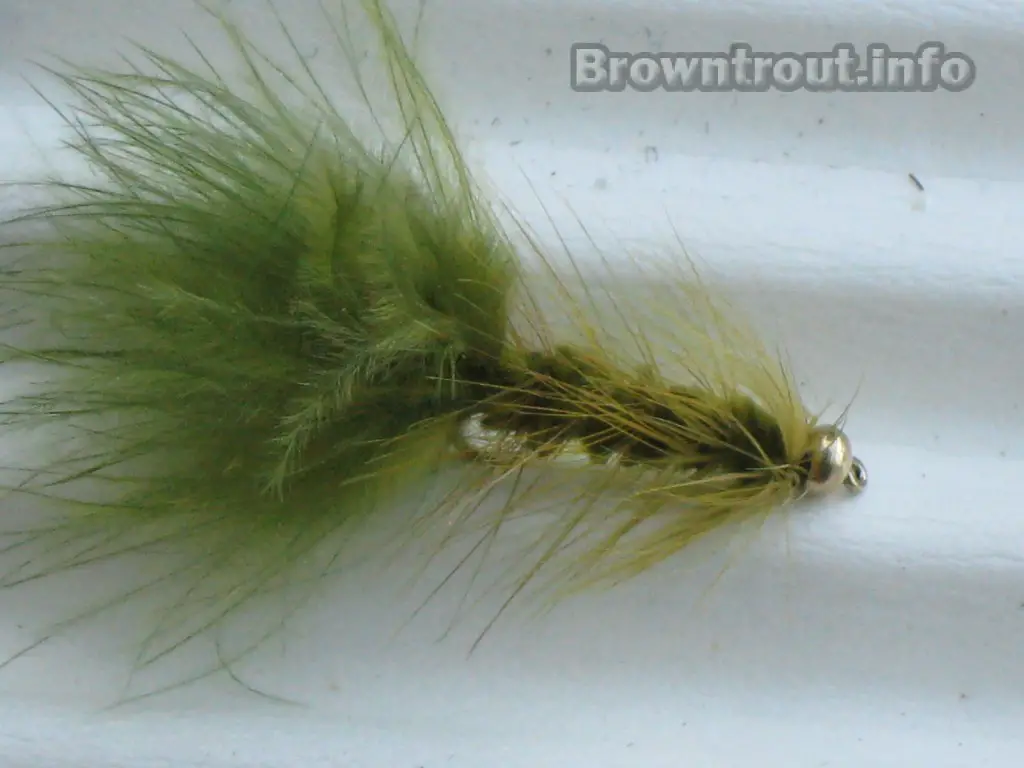This post was last updated on September 1st, 2021 at 05:22 pm
The Wooly Bugger Fly Pattern is a very simple pattern to tie and yet it is extremely effective. When fish aren’t feeding on the surface, won’t eat nymphs the wooly bugger is a “go to” pattern. Its versatility make it one fly that every fly fisherman should not go without. Add a bit of color to represent an egg on the front end and you have an egg sucking leech, or make it weighted and you have a great deep streamer pattern for lakes.
The Wooly Bugger Fly Pattern for Trout

Fishing The Wooly Bugger
This can be stripped like a streamer very effectively, yet that is not the only method to fishing this great fly! You can dead drift it in a nymph rig as well. Add chenille to the head of this fly and you have a spring steelhead pattern, the egg sucking leech! This fly will also devastate bluegill, bass and just about any other warm water you can find. This is a classic trout fly pattern and should be carried at all times while on the water. Strip it, chug it or shuggy dug it, the wooly bugger can do it all!
How to Tie a Wooly Bugger Fly Pattern
There are only a couple materials you need to wrap up this great fly pattern! These include:
- Maribou
- Chenille in various colors
- Saddle Hackle
- Lead wrap (if you want it weighted)
- Brass bead (optional)
- Hooks
- Thread of your desired color
Steps for tying Wooly Buggers
- Wrap the desired amount of lead wire onto your hook
- Apply the maribou tail (ostrich feathers)
- Tie in the piece of saddle to the back of the fly
- Add your chenille and wrap the entire length of the fly (leaving room at the head to tie off)
- Wrap your saddle hackle that you previously tied into the back around multiple times until you reach the front of the hook
- Tie off the fly and apply head cement
If you are using a bead as the head of this fly (as shown in image) That will be the first step of the process of tying the wooly bugger. The bead will simply slide on the hook.
What are the best colors for Wooly Buggers?
This varies, but generally speaking, some of the best colors are olive green (the original color), brown, black and gray; these work well at all times of year except wintertime when bright colors like chartreuse become more effective.
Wooly Bugger Fly Pattern Summary
The Wooly Bugger Fly Pattern is a popular fly pattern for freshwater bass fishing in the United States. It has been used by fly anglers worldwide to catch trout, salmon, steelhead and other species of fish.
The wooly bugger is a very versatile fly, because it can be fished in either fresh or salt water with equal effectiveness. When you tie on a wooly bugger, always make sure that its tail is longer than its body; this reduces drag underwater and helps create an enticing action on the retrieve. The best colors are olive green (the original color), brown, black and gray; these work well at all times of year except wintertime when bright colors like chartreuse become more effective.

